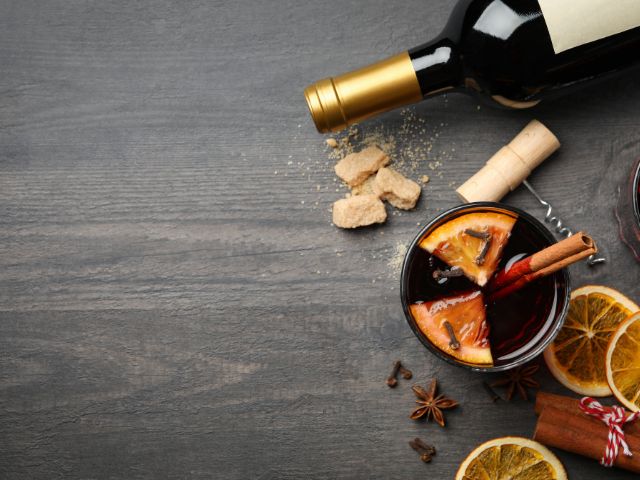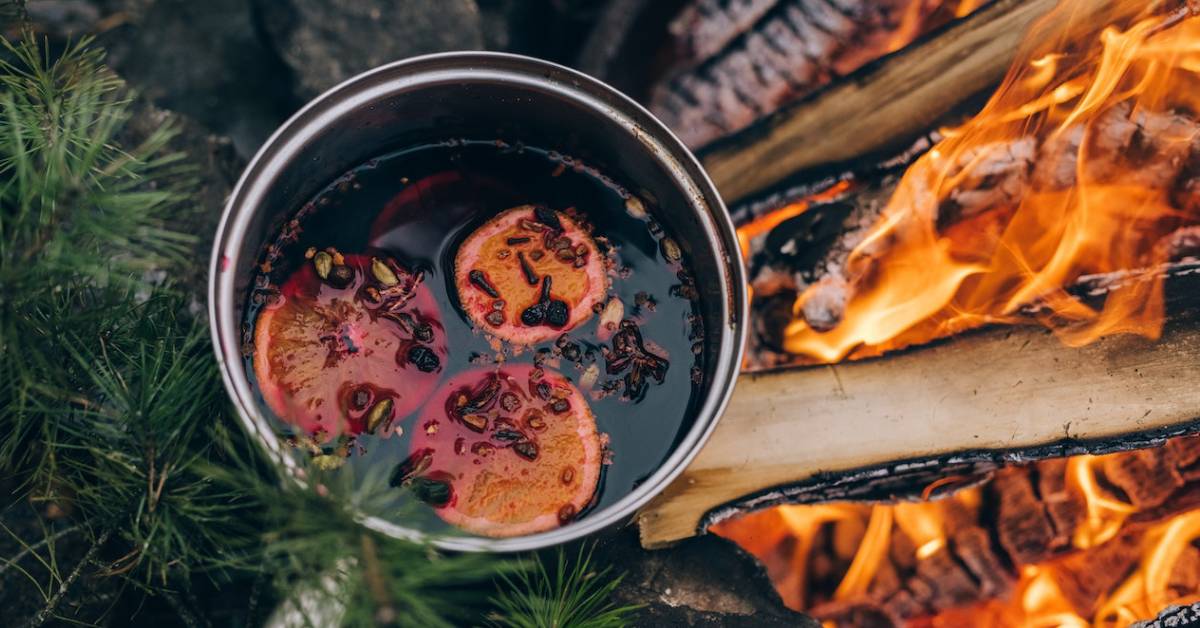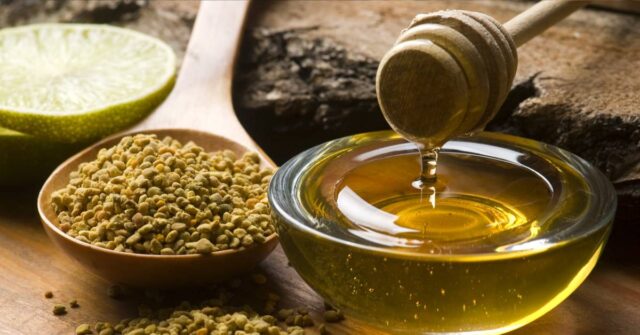In this comprehensive guide, we will be exploring the historic and cultural significance of drinking from horns, the origins of mulled wine, and how the two come together in a unique and timeless recipe.
Prepare to delve into a rich blend of history, tradition, and flavor.

The Tradition of Drinking Horns
Drinking horns carry a significant history, intricately woven into the fabric of several cultures around the world. Their use as drinking vessels extends back thousands of years, creating a strong tie between us and our ancestors.
History of Drinking Horns
Drinking horns have been discovered in archaeological sites dating back to the Iron Age. They were prominently used by ancient Germanic tribes, Celts, and the Vikings.
The Greeks and Romans also adopted this practice. In these societies, drinking horns often symbolized power and were frequently used in ceremonial contexts.
Significance in Different Cultures
From Nordic legends to medieval banquets, the drinking horn holds an important cultural significance. In Norse mythology, the gods themselves were often depicted drinking mead from horns.
In medieval Europe, they were seen as a sign of social status. Even today, they are used in reenactment events, adding an authentic touch to historical celebrations.
Understanding Mulled Wine
Mulled wine is a delightful beverage that has been savored across the globe for centuries. This warm, spiced wine has its roots in ancient Rome and has evolved over time to include a variety of recipes.
The Origin of Mulled Wine
The concept of mulled wine began in Rome during the 2nd century. To combat the cold winters, the Romans would heat wine and mix in spices, a practice they spread as their empire grew.
It has since become a holiday staple in many cultures, enjoyed for its warmth and rich flavors.
Variations Across Cultures
Each culture has added its own touch to mulled wine, using local ingredients and adapting to individual tastes.
Traditional English mulled wine often incorporates oranges, while German Glühwein includes a shot of brandy. Swedish Glögg stands out with its inclusion of raisins and almonds.
Recipe: Traditional Mulled Wine
Before we look into how this traditional drink adapts to a drinking horn, let’s explore a basic recipe for mulled wine. This classic version creates a perfectly balanced and warming drink.

Ingredients
A basic mulled wine recipe involves good-quality red wine, sugar, and a selection of spices such as cinnamon, cloves, and star anise. Oranges and lemons are also common additions, both for their juice and their zest.
Step-by-Step Instructions
Start by gently heating the wine in a pot, being careful not to let it boil. Stir in the sugar until it dissolves, then add your chosen spices and citrus.
Allow the mixture to simmer for about 20 minutes, letting the flavors meld together before serving warm.
How to Adapt Mulled Wine for a Drinking Horn
Drinking mulled wine from a horn provides a unique experience, blending the old world with the new. However, there are a few considerations to keep in mind when transitioning from a typical glass to a drinking horn.
Considering the Material of the Horn
Drinking horns are typically made from bovine horns, a natural material that can lend its own flavor to beverages.
It’s essential to clean the horn properly before use and ensure it has been appropriately prepared and sealed to safely hold liquids.
Temperature Control
As the horn isn’t insulated like modern drinking vessels, the temperature of your beverage may affect the horn, and vice versa. Make sure your mulled wine is warm but not too hot to prevent any potential damage.
Always make sure to check the manufacturer’s details for your drinking horn to see what the highest temperature beverage you can serve in it.
Some horns are treated with different sealing techniques to allow them to tolerate higher-temperature drinks.

Serving and Sipping Techniques
Unlike a typical wine glass, a drinking horn usually doesn’t have a flat base to rest on, so it’s important to consider how you hold and serve the horn.
Pouring the wine slowly and ensuring the horn is secure while drinking will enhance the experience.
Health Benefits and Concerns of Mulled Wine
Mulled wine, when consumed in moderation, may offer certain health benefits due to its ingredients. However, as with all alcoholic beverages, it’s also important to be aware of potential health risks.
Potential Health Benefits
The spices and fruits used in mulled wine, such as cinnamon and oranges, are packed with beneficial compounds. These can offer antioxidant properties and boost immunity.
Furthermore, moderate wine consumption has been linked with certain heart health benefits.
Possible Health Concerns
While mulled wine can offer health benefits, it’s essential to drink responsibly, as excessive alcohol consumption can lead to health problems.
Additionally, it’s worth noting that mulled wine does contain added sugar, which can contribute to other health issues when consumed in large amounts.
The Art of Making a Drinking Horn
If you’re interested in a truly hands-on experience, consider crafting your own drinking horn. This project requires patience and skill, but the result is a personal piece of history you can use and display.

Materials Needed for a Drinking Horn
At a basic level, you’ll need a raw bovine horn, sandpaper for smoothing, and a food-safe sealant to ensure the horn can safely hold liquids. Various tools may also be required for shaping and detailing the horn.
The Process of Carving and Shaping
After sourcing a suitable horn, the first step is to clean it thoroughly.
Next, you’ll shape and smooth the horn using your chosen tools, creating the desired size and style. After this, you’ll apply the sealant, ensuring a safe and durable finish.
Preserving and Maintaining Your Drinking Horn
A well-crafted and well-maintained drinking horn can last for many years. Regular cleaning and periodic re-sealing will help preserve your horn.
Avoid exposing it to extreme temperatures and always hand-wash it to keep it in top shape.
Modern Take on Drinking Horns and Mulled Wine
While drinking horns and mulled wine are steeped in history, they have found their way into the modern world, providing a unique twist on conventional drinking practices and an opportunity to experience the past in a tangible way.
Contemporary Uses of Drinking Horns
Today, drinking horns are used at historical reenactments, medieval-themed weddings, and fantasy events. They are also popular among fans of shows and films that feature historical or fantasy elements.
These unique vessels offer a touch of authenticity to any event.

Modern Twists on Mulled Wine Recipes
Mulled wine has seen a resurgence in recent years, especially around the holiday season. Many enjoy experimenting with the traditional recipe, adding ingredients like cranberries, and vanilla, or even switching the red wine for white.
Exploring Further
This guide has covered the history, tradition, and practical aspects of serving mulled wine in a drinking horn. If you’ve developed a taste for the topic, there are plenty more aspects to explore.
Other Historic Recipes for Drinking Horns
Aside from mulled wine, there are various other historical beverages that were often enjoyed from a drinking horn, such as mead and ale. Many of these drinks have interesting histories and traditional recipes worth exploring.
Cultural Events and Celebrations Featuring Drinking Horns and Mulled Wine
From Viking festivals in Scandinavia to Medieval reenactment events in the UK, there are countless opportunities to immerse yourself in the culture and tradition of drinking from a horn.
Many of these events also feature mulled wine, allowing you to sample different variations and enjoy a truly historic experience.











